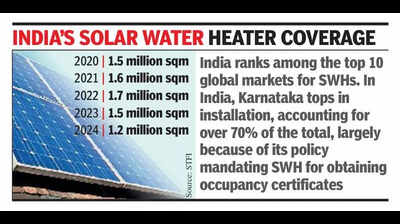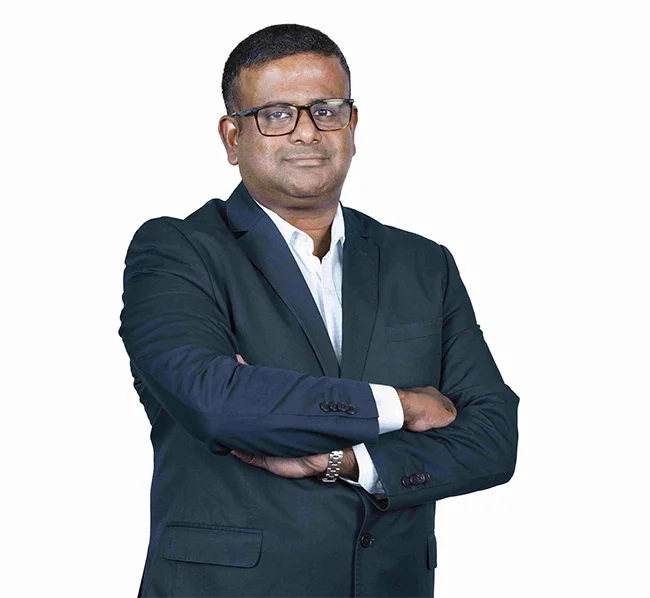Bengaluru: With the Centre's mandate for compulsory certification of all solar water heaters (SWHs) by the Bureau of Indian Standards (BIS) taking effect from April 12, consumers can expect a curb on the import of substandard and low-cost SWHs, particularly from China. This move is also set to ensure citizens have access to products that meet global quality standards. BIS recently issued specifications for various categories of SWHs available in the market.
The Union ministry of new and renewable energy (MNRE) appointed BIS in Oct 2024 as the official authority responsible for certifying and regulating the manufacturing and sale of SWHs across the country. The Solar Thermal Federation of India (STFI) has been actively urging MNRE to implement BIS certification to curb the influx of substandard imports and promote domestic manufacturing. TOI first reported on the Centre's crackdown on low-quality solar water heaters in Oct last.

With the publication of SWH standards, India has joined the likes of the European Union and Australia. Jaideep Malaviya, secretary general of STFI, said: "BIS standards for SWHs won't only ensure good-quality products but also open up opportunities for exports. Indian-made SWHs can now compete in the global market in line with ISO 9549 standards.
" Devendrappa, MD of Sunzone Solar in Bengaluru, said, "This will promote the ‘Make in India' initiative and boost domestic manufacturing with increased job opportunities, besides reliable products for citizens." As per the newly established BIS standards, flat plate collector-type SWHs are classified under two parts of IS 12933:2003. All-glass evacuated tube collectors and solar water heaters are certified under IS 16544:2016, while direct insertion-type storage water tanks fall under IS 16542:2016.
Additionally, BIS has introduced a categorisation system for SWHs based on capacity. Units with a capacity of 50-100 litres per day (lpd) fall under Group 1, those with 150-300 lpd in Group 2, and those with 400-500 lpd in Group 3, as per IS 16544:2016 standards. Prior to the implementation of these standards, consumers frequently purchased low-cost, substandard heaters that typically failed to function effectively after just a year of use.
The BIS notification, a copy of which is available with TOI, states: "Every inner tank material of stainless steel, mild steel or galvanised iron has to be tested mandatorily, separately for each of the groups, regardless of the capacity of SWH system." Under the new BIS standards, flat plate collector-type SWHs are treated as a single integrated product. In contrast, the govt has introduced separate standards for evacuated tube SWHs by distinguishing between the tanks and the tubes.
A source from MNRE explained, "Although the tubes are currently exempt from specific standards, they'll be required to meet certain criteria once they are connected to tanks and installed as a complete system." India ranks among the top 10 global markets for SWHs. Within the country, Karnataka tops in installation, accounting for over 70% of the total, largely because of its policy mandating SWH for obtaining occupancy certificates.
BOX INDIA'S SOLAR WATER HEATER COVERAGE 2020: 1.5 million sqm 2021: 1.6 million sqm 2022: 1.
7 million sqm 2023: 1.5 million sqm 2024: 1.2 million sqm.















